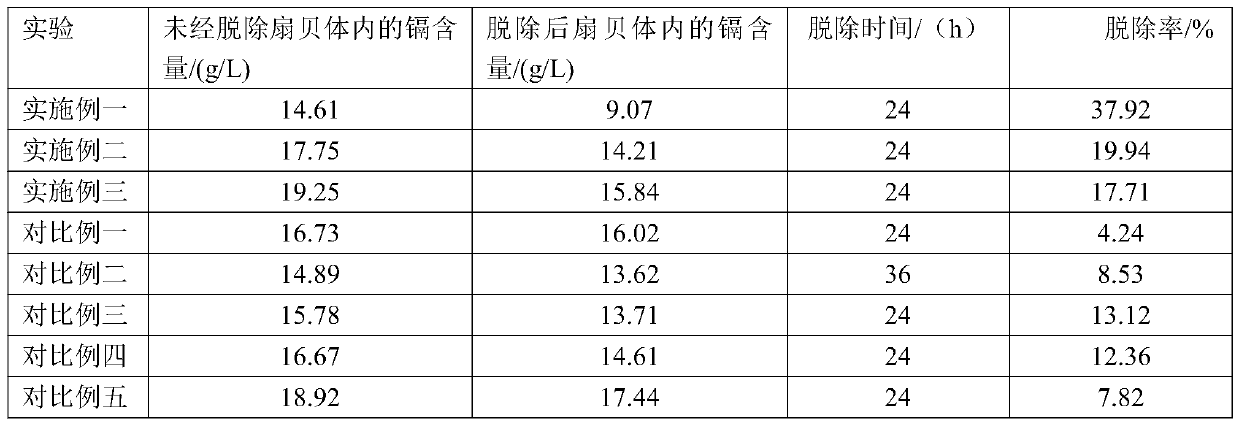Rapid cadmium removal agent in bivalve shellfish and preparation method of agent
A bivalve mollusk and removal agent technology, which is applied in the direction of food ingredients as antioxidants, food science, application, etc., can solve the problems of high cost, unsatisfactory effect, long time for removal, etc., and achieves convenient operation and improved Eating safety and economic benefits, and the effect of facilitating promotion
- Summary
- Abstract
- Description
- Claims
- Application Information
AI Technical Summary
Problems solved by technology
Method used
Image
Examples
Embodiment 1
[0033] Take 0.4g of vitamin C, 3g of disodium edetate, 0.9g of calcium chloride, 0.5g of zinc sulfate, and 0.1g of ferric chloride, mix them and dissolve them in 5L of seawater with a salinity of 35, and then remove the Put the clam scallops without sand into the seawater of the agent, and raise them temporarily for 12-36 hours. Dead individuals were picked out during the holding phase. After the temporary breeding, a certain number of scallops were randomly selected, shelled, and the water on the surface of the scallops was drained, and the cadmium was determined according to the above method.
Embodiment 2
[0035] Take 0.4g of tea polyphenols, 3g of disodium ethylenediaminetetraacetic acid, 0.9g of calcium chloride, 0.5g of zinc sulfate, and 0.1g of ferric chloride, mix them and dissolve them in 5L of seawater with a salinity of 35. Put the clam scallops without sand into the seawater in which the agent is removed, and raise them temporarily for 12 to 36 hours. After the temporary breeding, a certain number of scallops were randomly selected, shelled, and the water on the surface of the scallops was drained, and the cadmium was determined according to the above method.
Embodiment 3
[0037] Take 0.4g of tea polyphenols, 3g of sodium citrate, 1.4g of zinc sulfate, 2.8g of calcium chloride, and 0.3g of ferric chloride, mix them and dissolve them in 5L of seawater with a salinity of 35, and add Put sand-removed scallops in the middle, and raise them temporarily for 12-36 hours. After the temporary breeding, a certain number of scallops were randomly selected, shelled, and the water on the surface of the scallops was drained, and the cadmium was determined according to the above method.
PUM
 Login to View More
Login to View More Abstract
Description
Claims
Application Information
 Login to View More
Login to View More - R&D Engineer
- R&D Manager
- IP Professional
- Industry Leading Data Capabilities
- Powerful AI technology
- Patent DNA Extraction
Browse by: Latest US Patents, China's latest patents, Technical Efficacy Thesaurus, Application Domain, Technology Topic, Popular Technical Reports.
© 2024 PatSnap. All rights reserved.Legal|Privacy policy|Modern Slavery Act Transparency Statement|Sitemap|About US| Contact US: help@patsnap.com










